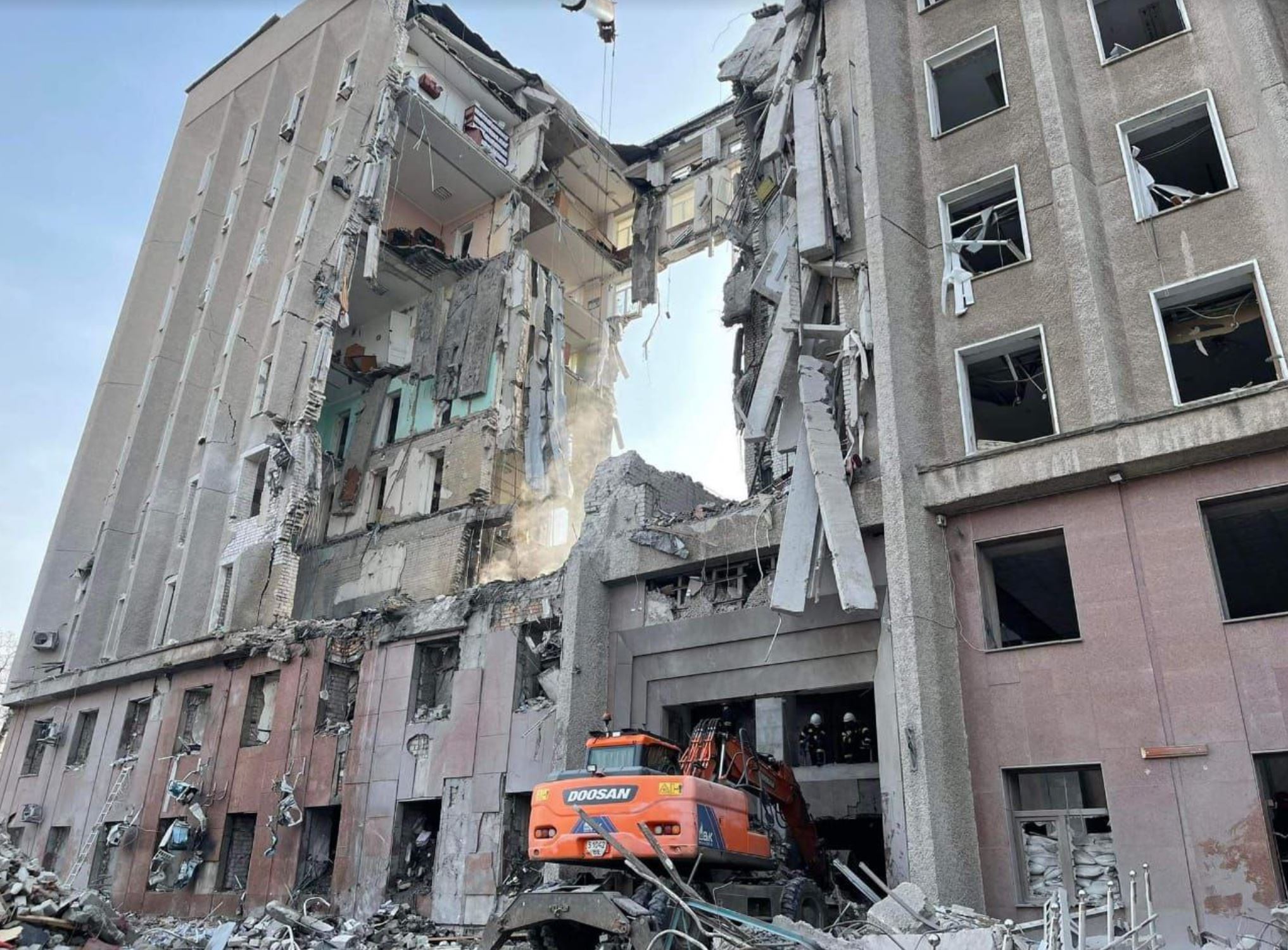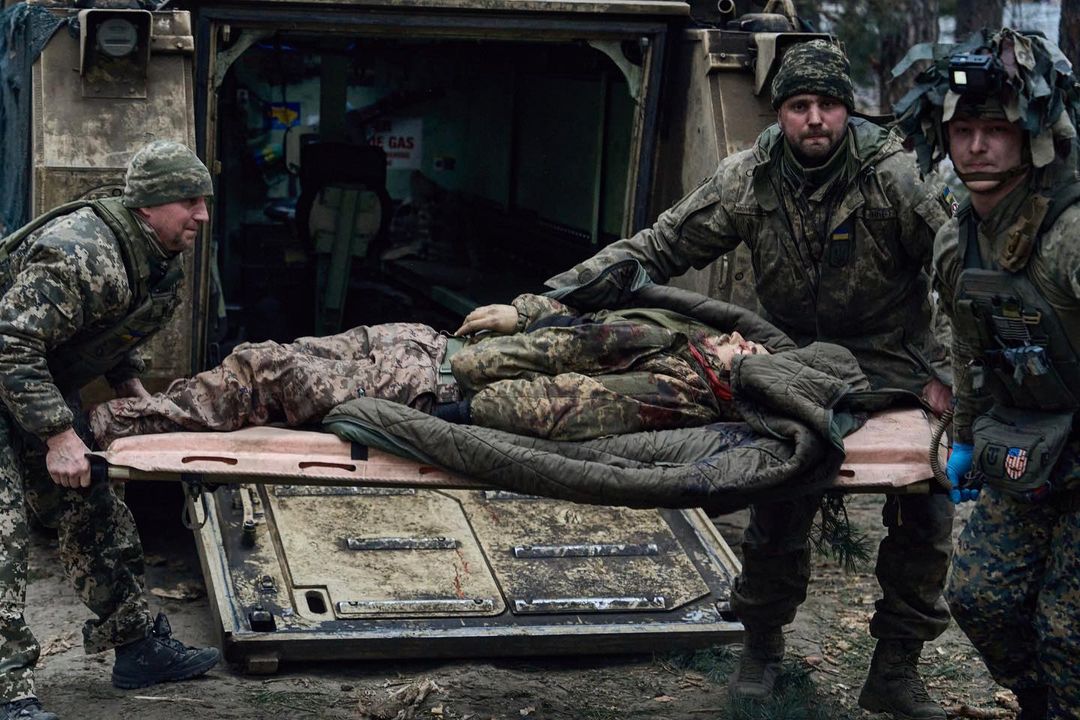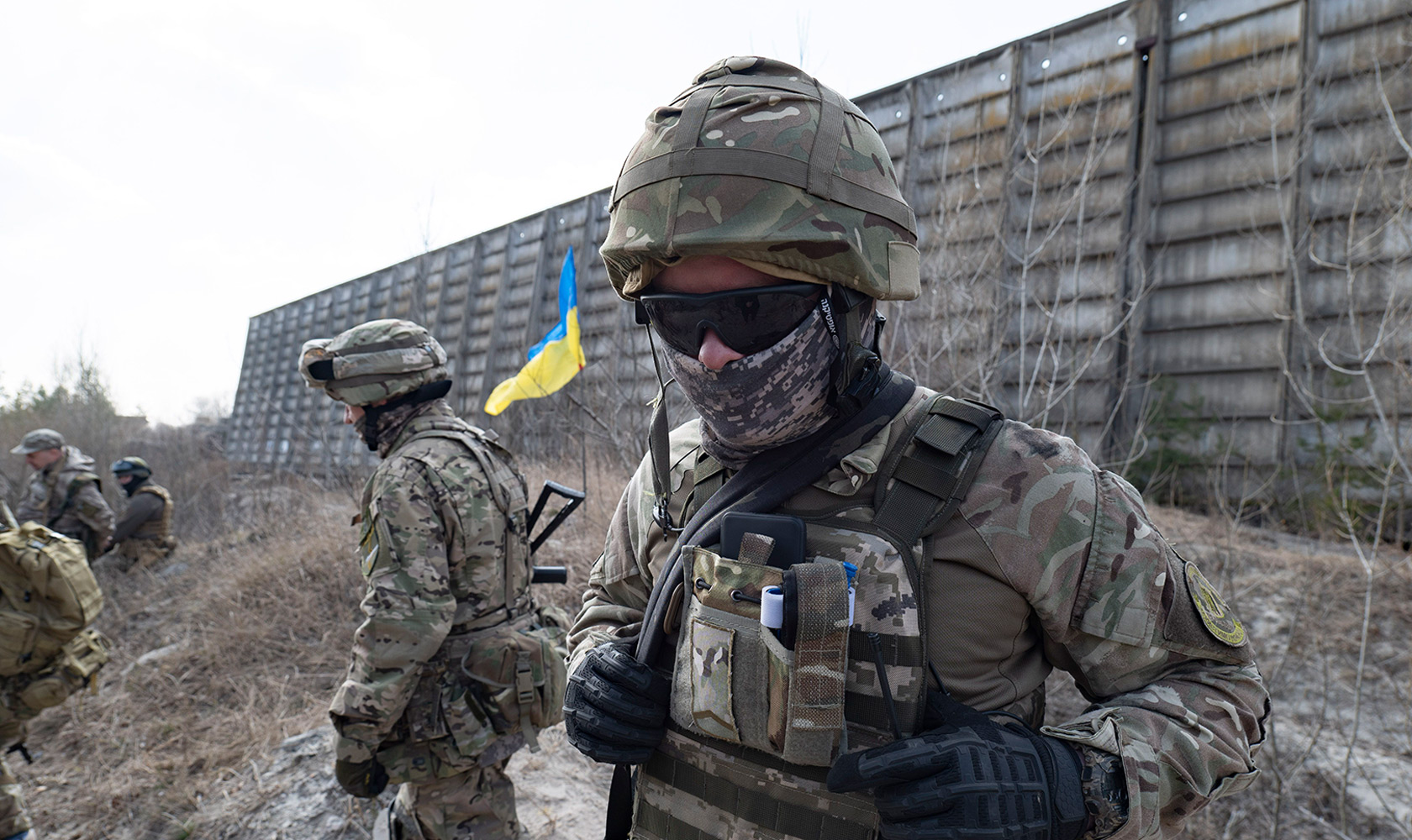Whether Ukrainians will have the ability to end the war quickly or be forced to suffer for months depends on the West and its decision to provide offensive weapons.
For more than 30 days, Ukraine has been actively defending itself from the Russian invasion. During the last 20 days, Russians could advance almost nowhere, except for minor success inside besieged Mariupol and a few towns in Donbas. Ukrainians also conducted several counterattacks around the cities of Kyiv and Mykolayiv and liberated the town of Trostianets near Sumy. However, these counterattacks are mostly conducted by infantry groups in small-scale rather than full-scale attacks that could lead to the encirclement of Russian troops, forcing them to surrender.
“The Russian army has moved to defense. It often does not have enough fuel. But the problem is that we [Ukrainians] lack heavy weapons to counterattack quickly. This is what the president is asking for. Western partners give us weapons for the guerrillas, but they do not give us weapons for a powerful army offensive. Apparently, they had the same calculation as in Moscow, that invaders will occupy most of Ukraine in three days. And still can not abandon this idea,” the advisor at Presidential Office Oleksiy Arestovych said.
Speaking at the NATO summit in Brussels on 24 March, Ukrainian President Volodymyr Zelenskyy said that he is grateful to the individual members of the Alliance that shared with Ukraine what they had to combat Russia. However, Ukraine had asked NATO to supply 1% of their tanks and 1% of aircraft and to provide anti-ship weapons and means of air defense. This is crucial not only for air protection but also to “unblock our cities that are now dying – Mariupol, Berdiansk, Melitopol, others,” Zelenskyy said, stressing further:
“Ukraine asked for your planes. So that we do not lose so many people. And you have thousands of fighter jets! But we haven’t been given any yet.”
He also said Ukraine is ready to pay for the equipment, but in any case it requires NATO’s approval to provide it.
Ukrainians never thought NATO could be afraid of Russia – Zelenskyy at summit in Brussels

Ukrainian military expert at the National Institute for Strategic Studies Mykola Bielieskov summarized the situation with weapons for Euromaidan Press
“NATO and the US are not giving Ukraine everything that could hypothetically threaten Russia. They advocate against the provision of the MiG-29 because it can hypothetically fly to Moscow, although it is complete bullshit, we will not send jets to Moscow. They provide only systems that are good in defense and will exhaust Russia. The Americans provide weapons that weaken Russia, but not weapons that help Ukraine win. If we had powerful weapons, we would already have made one or two powerful counterattacks, and this would have had a completely different effect. The issue of heavy weapons will arise very quickly, because no matter how much we save ammunition for Soviet systems, they are not eternal and we do not produce them.”
Artillery is even more important than tactical weapons such as Javelins or NLAWs that the West has already provided for Ukraine
Military aid that has already been provided by western partners to Ukraine is important for several reasons. First of all, the amount of aid received was massive. These are light weapons of the tactical level, but because Ukraine received so many of them, they play a role.
However, popular thinking often misjudges the importance of these light weapons, thinking that only the Javelins, NLAWs, other light grenade launchers or even Bayraktars are the main weapons at play in war. But if the Ukrainian artillery runs out of support, it would be a disaster. There are statistics that Ukrainian soldiers used 112 Javelins, and 100 of them hit their intended targets. The often overlooked detail is that Ukraine has used only 112 Javelins.
It is not only Javelins or NLAWs, but also artillery, tanks and aircrafts that play a role in the defeat of Russia. If there were no Soviet planes and air defense systems in Ukraine, Ukrainian skies would not be covered at all without these weapons. MANPADS can not compensate for all this, even if provided in large numbers. In general, if there were no artillery in certain areas, Western aid would delay the defeat of Ukraine, but it would be almost impossible to build an effective Ukrainian defense.
Artillery ammunition and artillery systems is the kind of weapons Ukraine needs to counterattack
It would be extremely difficult to carry out offensive operations without artillery. The amount of ammunition Ukraine has for rocket artillery, 122-152 caliber towed artillery is kept confidential. These types of ammunition are not produced within Ukraine. Any stores Ukraine has in its arsenal are from Soviet times. There was an attempt to start the production of 152 mm caliber ammunition in Ukraine, but it did not succeed in mass production.
The artillery is used around Kyiv, Chernihiv, and Kharkiv, in the south of the country, and in the Donbas area. The commanders in each direction of defense and attack must have both conventional artillery in the brigade along with special artillery brigades. In addition, Ukraine is forming new divisions, which must be reinforced by artillery to counterattack successfully. It is important to note that Ukrainian artillery is mostly 30 plus years old. In summary, supplies of artillery units from the West and ammunition would be helpful, if not crucial, to carry out successful counterattacks and repel Russian invaders.

Mobility – another crucial need to counterattack
In addition to firepower, mobility is required for successful offensive. Currently, the mobility of Ukrainian troops is reinforced mainly by volunteers who are buying SUVs themselves. If NATO is not providing Ukraine Humvees because of their complicated servicing demands, there remain several other options to strengthen Ukrainian mobility for counterattacks. For example, NATO could provide semi-military SUVs. No matter how small the weight of a Javelin or other system, one can't carry it on one’s shoulders for a long time.
While Bayraktar and Switchblade combat drones play their role, they can’t replace fighter jets, of which Ukraine does not have enough to support full-scale counterattacks
It is difficult to compare drones and fighter jets, they are not substitutes.
Bayraktar does not take many weapons. It is more of a reconnaissance than a strike platform. It is very good for intelligence. While manned aircraft take hundreds and thousands of kilograms of ammunition. The latter can perform more complex tasks. The main thing about Bayraktar is a good aiming system but it can strike with a small load. Regarding aircraft, it is a big load of ammunition but easier for the enemy to detect.
Offensive operations require a completely different firepower from a defensive one — much more aircraft, artillery, drones to create the necessary density of fire, to support the offensive forces. What the West is giving now for Ukraine is only for defense. There are almost no weapons for the offensive.
The same applies to Switchblade drones that Biden announced on 17 March 2022 to be provided for Ukraine. They are first of all for defense. And the announced 100 drones is not really a lot for this scale of war. They do not have a warhead large enough to fully replace the classic artillery or aircraft.
Ukrainian Air Force pilots say they've been able to fend off Russians but need more advanced technology
"Russians have control of a little part of Ukrainian sky, and that is where brutal bombings of peaceful cities like Mariupol and Kharkiv are happening" pic.twitter.com/hRZ1tPqcoT
— Euromaidan Press (@EuromaidanPress) March 24, 2022
Ukraine also uses its own latest developments of heavy weaponry and anti-tank missile systems, but it hasn’t had time to produce enough
There are several Ukrainian weaponry systems that could be used, but Ukraine has not had time to manufacture enough of them.
The Neptun anti-ship cruise missile was developed in 2015-2019, with its first test launch performed in 2019. Reportedly, the Ukrainian coastal guard received some units in 2021. While the number of units and missiles is classified information, there are definitely not many, if any, capable of performing necessary tasks. To date, Ukraine has not used Neptun missiles in the Russo-Ukrainian war. Their range is about 300 km, so theoretically these missiles could hit Russian ships even near Sevastopol bay from the Ukrainian coast.
Furthermore, a Ukrainian-made Vilkha heavy multiple rocket launcher with guided ammunition was developed on the basis of Smerch, and the first units were provided for Ukrainian troops in 2018. Mass production was planned to start in 2021. According to Mykola Bielieskov, in the current war Vilkha has hit about 50 Russian targets. However, before the war Ukraine had time to produce only about 100 missiles. It remains unclear whether Ukraine will manage to produce these missiles during the war. Pavlograd city, where the fuel for missiles is produced, is located near the front line. Moreover, production of these weapons requires significant time.
The most useful Ukrainian development so far is the domestically manufactured Stugna-P anti-tank missile systems, produced by the Kyiv Luch bureau and Artem factory. These enterprises were likely able to be evacuated and continue their production during the wartime, the details of which are naturally secret information.
“Ukrainian anti-tank missiles play a big role. In some conditions they are even better than the Javelin. If it is possible to prepare an ambush in advance, they are better because they have a longer range. No tank can fire 5 kilometers, which means Ukrainian operators are safe,” Beleskov said
Moreover, the price of one Stugna-P missile is $20,000, several times less than the price of a Javelin missile. In 2018 alone, Luch reportedly supplied 2,500 missiles to the Ukrainian army. The true number of these missile systems and missiles that the Ukrainian army has is unknown.
Multiple videos show that Ukrainian soldiers are successfully using Stugna-P systems in the 2022 Russo-Ukrainian war. However, Stugna-P is again primarily a defensive system. What Ukraine needs the most right now to end war quickly and to save many lives in besieged and shelled cities is powerful weapons for counterattack.






